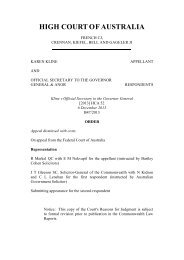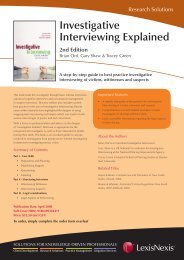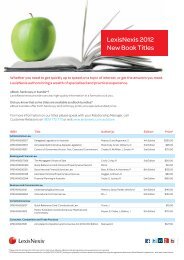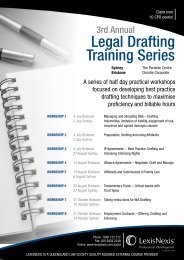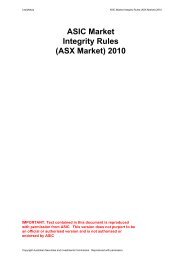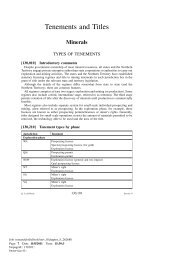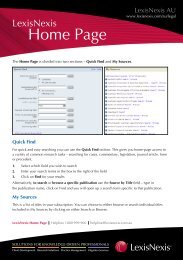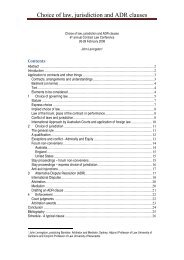Sample Introduction - LexisNexis
Sample Introduction - LexisNexis
Sample Introduction - LexisNexis
You also want an ePaper? Increase the reach of your titles
YUMPU automatically turns print PDFs into web optimized ePapers that Google loves.
ANNLR[0.20.B]the entity believes that it has been refused admission to listing in circumstances whereother entities have received approval). This could potentially allow an entity to apply tothe court for orders directing ASX to take certain actions under s 793C of theCorporations Act, and such applications have been made. However, the absolutediscretion of ASX in such decisions would be a significant impediment to pursuing sucha claim as it is likely to be difficult to identify an”obligation” by ASX under the ListingRules which it has failed to meet.As mentioned in para [*] above, ASX’s discretion to waive or not enforce compliancewith the Listing Rules exists solely within the framework for waivers set out in the ListingRules itself as set out in Ch 18 of the Listing Rules. So any discretion which ASX has inthis regard is limited by the obligation to administer its Listing Rules as written and in amanner that best promotes a fair orderly and transparent market: see para [0.1.A] abovefor notes on how the Listing Rules fit within the regulatory framework which governsASX as the holder of an Australian market licence under the Corporations Act.This section of the <strong>Introduction</strong> also sets out the basis for a purposive interpretation ofthe Listing Rules in accordance with the principles set out in the <strong>Introduction</strong> (seepara [0.10.A] above). Such a basis for interpretation is given effect to by theacknowledgement which each entity seeking admission is required to give in the ListingApplication and Agreement as follows:‘The listing rules are to be interpreted:• in accordance with their spirit, intention and purpose;• by looking beyond form to substance; and• in a way that best promotes the principles on which the listing rules arebased.’[0.20] Approved CS Facility — ASTC Settlement Rules & ACHClearing Rules[0.20.A] General principle and ASX policyIn order for an entity’s securities to be quoted and traded on ASX, transactions insecurities must be able to be completed by payment or delivery of securities. Completionof transactions on the ASX market is effected through the electronic “clearing andsettlement facility” which has been approved for this purpose. This means that transfersof securities are effected without the delivery of share certificates or the completion ofpaper transfer forms. This is referred to as a trading in “uncertificated” securities. In anuncertificated trading and settlement system it is necessary for the securities which areissued to be compatible with the requirements for electronic trading (eg for there to be norestrictions on transfers under the terms of issue).Clearing and settlement facilities must be licensed under the Corporations Act andapproved by ASX. The primary clearing and settlement facility is provided by the ASXsubsidiaries ASX Clear Pty Ltd and ASX Settlement Pty Ltd, but it is possible that, infuture, alternative clearing and settlement facilities may be established for this purpose.The Listing Rules use the expression “approved CS facility” which is a defined termunder LR 19.12. The electronic clearing and settlement facility provided by the ASXsubsidiaries ASX Clear Pty Ltd and ASX Settlement Pty Ltd is referred to as the“CHESS” system, which stands for the “Clearing House Electronic Settlement System”(see definition of “CHESS” in LR 19.12).[0.20.B] Legislation and ASIC policyUnder s 768A of the Corporations Act, a clearing and settlement facility is defined as:Service 0 7 <strong>LexisNexis</strong>Job: commercial/annlr/allvols/serv_0/intro_251951Page: 10 Date: 15/7/2011 Time: 17:17:9bwpageid:: 7::bwservice::0::



